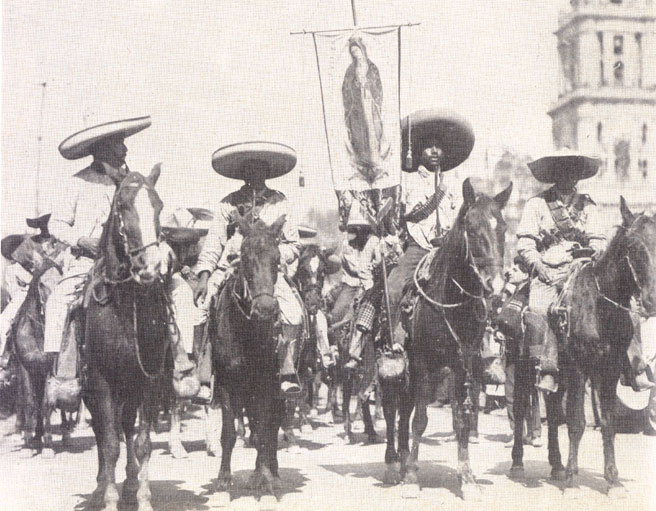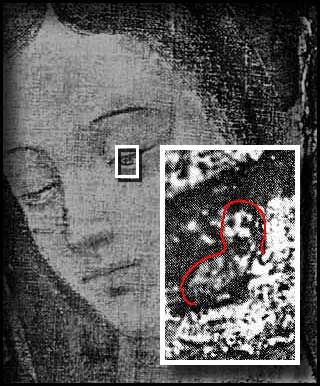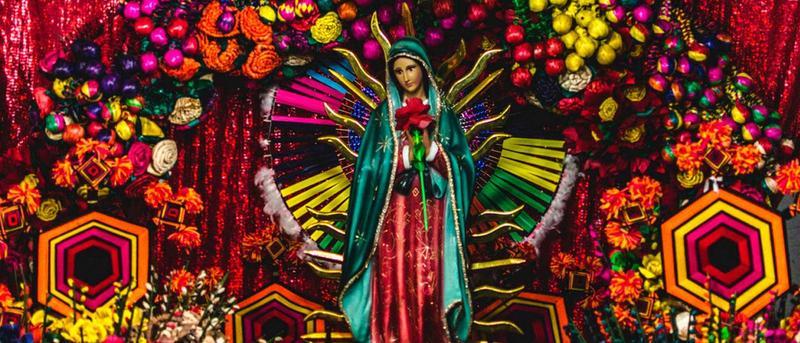The Virgin of Guadalupe: 10 Fascinating Facts
The Virgin of Guadalupe: 10 Fascinating Facts
Mexicans will tell you that they’re 90 percent Catholic but 100 percent Guadalupan. While the numbers aren’t entirely accurate, it is definitely the case that historically the Virgin of Guadalupe has been a constituent part of Mexican national identity, reflected in the fact that millions of both women and men are named Guadalupe, many going by the nickname “Lupe,” such as my colleague at the University of Houston, Dr. Guadalupe San Miguel, Professor of Mexican-American history. As a specialist in Latin American religion, I’ve always been fascinated by the most important advocation of the Virgin Mary in terms of both territorial coverage and number of devotees.
La Virgen Morena (the Brown Virgin) is not only patroness of Mexico but also Empress of the Americas, from Argentina to Canada. While other manifestations of Mary only claim a region or country, at best, Guadalupe is the only one to reign over two continents, the entire Western Hemisphere. And if that’s not enough, for a brief period in the mid-twentieth century she was also declared patroness of the Philippines, home to the world’s third largest Catholic population.
Before Mexican folk saint, Santa Muerte, caught my scholarly attention in 2009, I had conducted two years of research on the Mestiza Virgin for a book project that was put on hold. On the eve of her feast day, December 12, I thought I’d share ten fascinating facts about the Virgin who led Mexicans to independence from Spain.
1. Many Mexicans aren’t aware that the original Guadalupe is from Extremadura, Spain

In fact, Christopher Columbus was a devotee and even named the Caribbean island of Guadeloupe in her honor, after she purportedly saved his fleet from a storm at sea. The Spanish Guadalupe is one of several Black European virgins, so in her Mexican incarnation she actually became lighter complected as the Virgen Morena.
2. A native goddess’s mythology is closely linked to The Virgin of Guadalupe

Prior to Guadalupe’s purported appearance to the Indigenous peasant, Saint Juan Diego, in 1531, Aztec goddess Tonantzin had been worshipped for decades at the very same site, Tepeyac, which is now home to the Basilica in Mexico City. Tonantzin means “Our Mother” in the Aztec language of Nahautl, so many skeptics contend that the Spanish colonial Church concocted the story of Guadalupe appearing to Juan Diego as a way to convert his fellow Nahuas and other Indigenous to Christianity.
3. Despite his recent canonization, there is no hard historical evidence that Saint Juan Diego ever really existed.

In fact at the time of the controversial canonization process the abbot of the Basilica, Guillermo Schulenberg, resigned in 1996 claiming that Juan Diego had never existed and “is only a symbol.” The Nahua peasant was canonized, nonetheless, as part of a strategy to retain Indigenous Catholics who have been defecting in droves to Protestantism, especially Pentecostalism.
4. Art historians studying depictions of the Patroness of Mexico over the centuries have discovered that over time her skin color has become progressively darker, going from a lighter to a darker shade of brown.

Studies on her historical development, such as Our Lady of Guadalupe by historian Stafford Poole, demonstrate that contrary to legend, Mexican creoles (people of Spanish descent born in Mexico) were the first devotees of Guadalupe and the primary propagators of her cult. Renditions of Guadalupe became noticeably darker complected on the heels of the Mexican Revolution (1910-20), which led to the exaltation of the mixed-race mestizo as the new model of Mexicanness.
5. While devotion to her grew during the Spanish colonial era, it was independence from Spain that really transformed her into the national patroness that she is today.

Independence leader Father Miguel Hidalgo launched the campaign for independence with the battle cry “Death to the Spaniards and long live the Virgin of Guadalupe!” The image of the Mexican Virgin emblazoned on flags, banners and peasant sombreros became the insignia of the armed rebellion against Spanish rule. Spanish troops, on the other hand, were led by the Virgin of Remedies, who was the preeminent advocation of Mary in Mexico until eclipsed by Guadalupe.
6. Besides her darkening complexion, La Morena remained relatively unchanged in artistic renditions until as recently as the 1980s.

And the first artists to experiment with novel depictions of the Empress of the Americas were Mexican-Americans who didn’t feel as culturally and religiously constrained as their Mexican counterparts in exploring new ways of representing her utilizing all kinds of media. A bare-breasted Guadalupe created by artist Paz Winshtein was the object of considerable controversy when it was displayed at a gallery in Santa Fe, New Mexico, in 2014.
7. The etymology of her name is also the subject of considerable debate.

Some linguists and historians point to Nahuatl origins while others, more convincingly, remind us that the name Guadalupe already existed in Spain, and thus we should look there for its etymological genesis. There is little doubt that the prefix “Guada” comes from the Arabic “wadi” or river valley. The jury, however, remains out on “lupe,” which many assert comes from the Spanish “lobo” (lupus in Latin) or wolf.
8. Guadalupe was an integral part of the world’s first great popular rebellion of the twentieth century, the Mexican Revolution (1910–20).

Fighting under the slogan “land and liberty,” revolutionary peasant leader Emiliano Zapata and his fighters carried the Mestiza Virgin on banners into battle against Mexican oligarchs. Some Zapatista guerrillas carried on the tradition during their uprising in 1994 in the southern state of Chiapas.
9. In 1929 the official photographer of the old Basilica claimed to have discovered the image of a bearded man in the right eye of the original image of Guadalupe.

Two decades later another “expert” not only confirmed the presence of the original bearded man but also claimed to see it in both her eyes. Since then, the “secret of her eyes” has expanded to include images of an entire family supposedly visible in both of her pupils. For believers, the images are reflections of what Guadalupe saw when she appeared in 1531 to Saint Juan Diego.
10. The tilma, or cloak made of cactus fiber, upon which the Virgin’s image is imprinted is held to be miraculous by devotees.

Some scientists claim an absence of brush strokes on the tilma while others report that the coloration contains no animal or mineral elements. Perhaps the most spectacular miracle, according to devotees, is the tilma emerging from a bomb blast unscathed. In 1921 an anti-clerical radical detonated twenty-nine sticks of dynamite in a pot of roses beneath the tilma. The blast destroyed a marble rail, twisted a metal crucifix and shattered windows throughout the old Basilica but the tilma itself was untouched.
R. Andrew Chesnut/The Huffington Post
Be the first to post a message!
